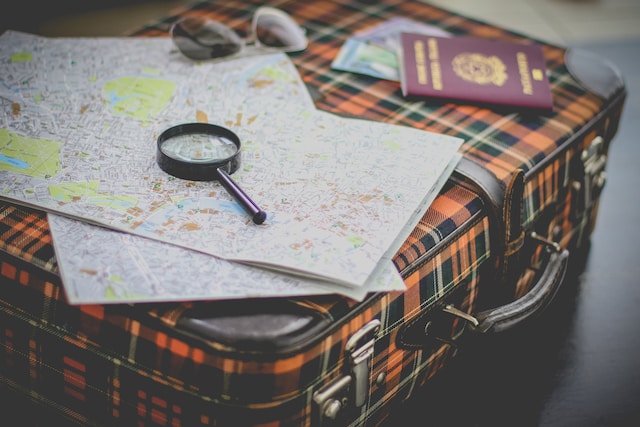Planning a trip can be as exciting as the journey itself. Whether you’re an experienced traveller or a novice explorer, meticulous travel planning ensures a smooth, enjoyable, and unforgettable adventure. In this comprehensive guide, we’ll explore the best ways to plan your travel, from setting your travel goals to crafting the perfect itinerary.
Set Clear Travel Goals: Define Your Purpose
Before diving into the nitty-gritty of planning, start by defining your travel goals. Ask yourself why you want to travel. Is it for relaxation, adventure, cultural exploration, or a special occasion? Understanding your purpose will guide your decisions throughout the planning process.
Select Your Destination: Where Do You Want to Go?
Once you’ve identified your travel goals, choose a destination that aligns with them. Research potential destinations, considering factors like climate, activities, culture, and budget. Create a shortlist of places that pique your interest, and then narrow it down to your top choice.
Determine Your Travel Budget: Set Financial Boundaries

Establishing a clear budget is crucial to avoid financial stress during your trip. Consider all potential expenses, including transportation, accommodation, food, activities, and souvenirs. Be realistic about your financial limits and plan accordingly to ensure a memorable yet financially responsible journey.
Select Travel Dates: Timing Is Everything
The timing of your trip can significantly impact your experience. Research the best time to visit your chosen destination, taking into account factors like weather, crowds, and local events. Consider flexibility in your travel dates to take advantage of cost-effective options.
Accommodation: Find Your Home Away from Home
Research and book accommodation well in advance. Options range from hotels and vacation rentals to hostels and homestays. Consider factors like location, amenities, and budget. Read reviews, compare prices, and choose accommodation that suits your travel style and preferences.
Transportation: Navigating the Journey
Research transportation options to reach your destination and move around during your trip. Compare flights, train routes, bus services, and car rentals to find the most convenient and cost-effective options. Ensure that your transportation choices align with your travel goals and itinerary.
Create an Itinerary: Plan Your Adventures
Crafting an itinerary is a crucial step in travel planning. Outline the activities and attractions you want to experience at your destination. Allocate time for must-see landmarks, cultural experiences, and moments of relaxation. A well-organized itinerary maximizes your time and ensures you don’t miss out on memorable experiences.
Travel Insurance: Protect Your Journey
Travel insurance is a safety net for unexpected situations. It provides coverage for trip cancellations, medical emergencies, lost luggage, and more. Review different insurance policies and select one that offers comprehensive coverage tailored to your travel plans.
Travel Documents: Crossing Borders Legally
Ensure you have all the necessary travel documents, including passports, visas, and any required permits. Check the expiration dates well in advance, as some countries may require your passport to be valid for at least six months beyond your planned return date.
Health Precautions: Staying Healthy Abroad
Prioritize your health when travelling. Research any required vaccinations or health precautions for your destination. Pack a basic first-aid kit with essentials like pain relievers, bandages, and any personal medications you may need. Stay informed about health advisories and local health facilities at your destination.
Currency and Finances: Managing Money Abroad
Managing your finances while travelling is essential. Notify your bank of your travel plans to avoid any issues with credit or debit card usage abroad. Carry some local currency and a small amount of U.S. dollars or euros for emergencies. Be aware of currency exchange rates and fees.
Language and Communication: Bridging the Gap
Language can be a barrier or a bridge to cultural immersion. Familiarize yourself with basic phrases in the local language, carry a translation app or phrasebook, and consider purchasing a local SIM card or an international data plan to stay connected and navigate your destination easily.
Safety and Security: Prioritizing Your Well-Being
Safety should be a top concern when travelling. Research the safety situation in your destination, stay alert to your surroundings, and avoid risky areas, if any. Share your travel itinerary and contact details with a trusted friend or family member and stay informed about local emergency numbers.
Packing Essentials: Pack Smart and Light
Pack efficiently by considering the weather, activities, and the duration of your trip. Create a packing list to ensure you don’t forget essential items like clothing, toiletries, chargers, and travel adapters. Minimize luggage to make transportation easier and reduce the risk of lost belongings.
Emergency Plan: Preparedness for the Unexpected
Lastly, have an emergency plan in place. Share your itinerary with a trusted contact, keep copies of important documents in a separate location, and know the location of your country’s embassy or consulate at your destination. Being prepared for unexpected situations ensures your safety and peace of mind.
In conclusion, travel planning is an art that involves setting clear goals, making thoughtful choices, and organizing your journey effectively. By following these best practices, you can create a travel experience that aligns with your aspirations and ensures a smooth, enjoyable, and memorable adventure. Safe travels!

